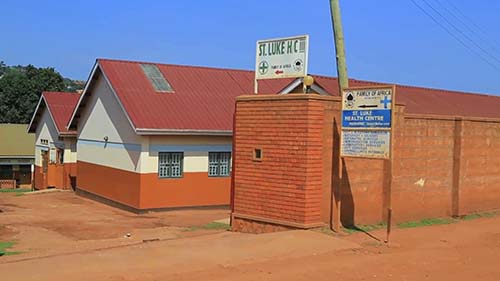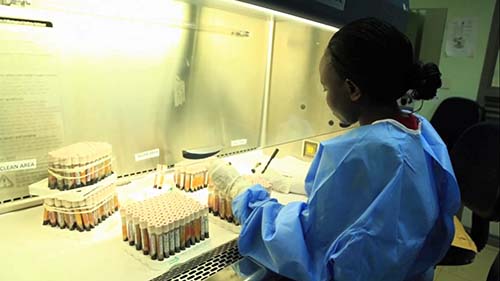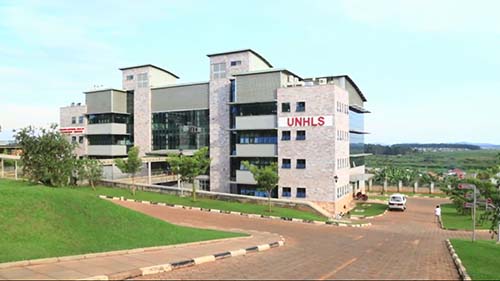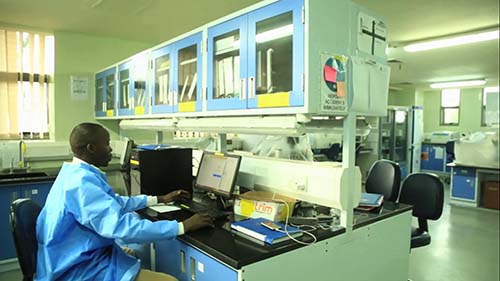Demonstrating How to Improve Operational Efficiency in Uganda’s Overall Pathology Service – Part 3
Ibrahimm Mugerwa1, Tony Boova2, Van Der Westhuizen2, Christopher Okiira1, Agnes Nakakawa3, Micheal Kasusse3, Suzan Nabadda1, Gaspard Guma1, Suleiman Ikoba1, Charles Kiyaga4
1Uganda National Health Laboratory Services, 2Beckman Coulter Life Sciences, 3Makerere University, 4ASLM
Greater efficiency for lab inventory management
The initial assessment found that supplies would be delayed, with frequent stock outs, due to poor communication because there was no clear chain of command for coordinating this activity. This was especially problematic for viral load and early infant diagnosis supplies (EID).
Ordering of supplies was found to be erratic, with no account being taken of the distribution cycles of the National Medical Stores (Uganda’s procurement agency). Further, there were no standardized tools and mechanisms for managing stock levels for Vital, Essential and Necessary (VEN) laboratory commodities.
To resolve this, CPHL worked with the new regional hubs coordinator to set up a centrally coordinated mechanism for distribution of viral load and EID supplies via the hub system. This led to a marked increase in the number of samples referred from the hubs to CPHL. Further, an exchange service was implemented between labs for buffer stock and other commodities.
Time management skills’ training was initiated for regionally-based staff so that they understood how to coordinate ordering with the centralized system run by the National Medical Stores. Towards the end of the pilot study, improvements were also noted in the transportation of supplies from central supply depots to hubs (via a CPHL centrally managed courier service) and their subsequent distribution to lower level facilities.
Improved workflow and reduced turnaround times
The Ugandan regional hub system defines turnaround time (TAT) in two ways:
- TAT1 –samples from lower health facilities to the hub: from the time the sample is dispatched to the result being generated by the hub.
- TAT2 –samples sent by the hub to CPHL the subsequent return of the result.
In the three months before the study started, TAT1 was averaging 2.7 weeks while TAT2 was around 4.3 weeks (see full TAT data for the eight hubs in Appendix 4). In addition, some results were misplaced due to the lack of adequate documentation and tracking system. Improvements were almost immediate, and by the end of the pilot, TAT1 and TAT2 were down to one week or less (Figure 3).
Figure 3: Significant reductions in both TAT1 and TAT 2 during the 12 month pilot study
Kiyaga C, Lee HH, Allain JP (2015) Adherence to Early Infant Diagnosis Testing Algorithm, a Challenge to Early Infant Diagnosis Program in Resource Limited Settings of Uganda. J HIV Clin Scientific Res 2(2): 030-039
A specific objective was to increase patient access to essential diagnostics for HIV/AIDS and opportunistic infections in the West Nile Health Region. The low volume of tests being carried out was a major factor in the lack of patient access.
Overall, sample volumes went up more than 350% in the 12 month pilot study (Figure 4). Complete blood counts went up 5% between the first and second quarter of the intervention.
Between the second and third quarter of the pilot study, the number of CBCs increased by 585. The slight dip (Figure 5) in quarter three is accounted for by normal migration patterns during festival time. Between the first and fourth quarters, increases in the volume of hematology specimens processed at the hub went up by almost 60% (Figure 5). For improvements in CD4 and GenXpert volumes see Figure 5a.
Figure 4: Overall Sample Volume Increases
Figure 5: Overall increases for CBC sample volumes
Figure 5a: Overall increases for sample volumes including CD4 and GenXpert
Before intervention, the hubs in the area averagely sent 38,534 viral load samples per quarter. This increased by 130,346 VL samples, an almost 350% rise. Before the intervention, lower sites were sending the hubs 1,517 VL samples each quarter. This increased well over 800% to 13,958 samples. Figure 6, charts 1 and 2.
Figure 6: Quarterly viral load sample processing improvements over the 12 months
Showing quarterly VL tests at the Hub
Showing quarterly VL tests at the lower facilities
Showing quarterly VL tests sent to CPHL
Fill the form to download Full case study

CD4 Testing in Remote Areas

CD4 testing in remote areas
Follow the links, to learn how Uganda designed an innovative system to ensure that people in remote communities can receive high quality HIV prevention, care and treatment services.
How Uganda is Leaving No One Behind
Around 1,350,000 people are currently living with HIV in Uganda, and there are an estimated 33 new HIV infections per day among young people between the ages of 15 and 24.
Efficient Sample Collection in Remote Areas
The main challenge faced by people in remote areas when it comes to HIV/AIDS testing is access. People in remote areas can be very poor, so it can be difficult for them to travel to the service point, although the treatment itself is free in Uganda.
High Quality Testing in Rural Communities
The majority of countries still don’t have the infrastructure, transport or technology to effectively manage the collection, storage and transportation of the blood once the sample has been taken.
Demonstrating Operational Efficiencies: Part 1
Stimulating efficiency while empowering and mentoring local laboratory professionals in workflow management underpins the remarkable improvement in the routine laboratory service of Uganda’s West Nile Health Region.
Demonstrating Operational Efficiencies: Part 2
Uganda’s Central Public Health Laboratories (CPHL) recognized that its regional laboratory service was suffering from a number of challenges that were affecting service delivery and patient outcomes.
Demonstrating Operational Efficiencies: Part 3
The initial assessment found that supplies would be delayed, with frequent stock outs, due to poor communication because there was no clear chain of command for coordinating this activity.








